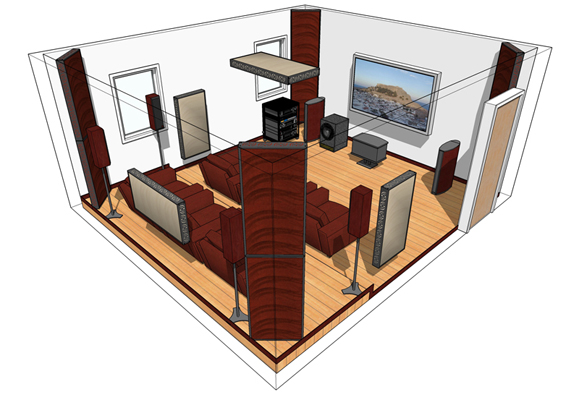I'm looking to make some decent home recordings. I realize I'm not going to get pristine recordings with my current situation but would just like some tips if at all possible. What I have so far is an Apogee One, Macbook Pro with Logic Pro and am about to purchase the Blue Bluebird Microphone. Now I'm a 20 year old who lives with my mother so I can't do too much but any type of suggestions would be more than welcomed! Like I said, I'm not looking to get the highest quality out there, but with what I have and am getting, is it going to be possible to obtain decent recordings? I'll be recording vocals only. Thanks in advance for any help you may offer, it's very much appreciated.

Comments
i'm not sure what you are asking advice about. you seem to have
i'm not sure what you are asking advice about. you seem to have made the decisions about the gear you want. are you asking about room treatments?
i would advise you to get some of http://www.readyaco… this stuff and some Gulliford of Main fabric and make up some panels you can put up when you are recording and mixing.
you can take them down and store them somewhere when you don't need them and if and when you move to a more suitable space you can take them with you.
in the end if you decide to you will be able to sell them for what they cost you so it's a good investment and nothing else will go as far to improve the sound of your recordings.
Attached files
To add to that sage device... I see a LOT of Bluebirds ( and now
To add to that sage device...
I see a LOT of Bluebirds ( and now Sparks) for sale used on my local Craigslist. That mic is notorious for being too sensitive in the wrong scenario - a home with minimum treatment. We say this many times here on RO :
That if you have a less-than-good acoustic treatment you are shooting yourself in the foot with a large-diapgragm condenser. There are many live sound vocal mics - and not just the Shure SM57/58 - that you should be looking at. These include the Audix OM2, the Sennheiser E835, the Beyer TG69 (1 of my faves), and the E-V ND767a are all very fine vocal mics. And because they are designed to keep "leakage" out (to control feedback) they have a nice tight pick-up that will keep the crappy room reflections out of the picture. You can do much better than the Bluebird at that same price point.
moonbaby, post: 404189 wrote: To add to that sage device... I se
Okay so I'm looking at these mics, would I use them with the Apogee One? Sorry I'm a major noob at this stuff. Thanks for your suggestion.
Here's the lowdown regarding the microphones. Large diaphragm co
Here's the lowdown regarding the microphones. Large diaphragm condenser microphones suffer from what is known as poor off axis response. It's this poor off axis response that makes everything sound bad in acoustic environments that are not already ideal. In those situations, we usually utilize small capsule condenser microphones or better still, those common dynamic microphones everyone loves. The small diaphragm condenser microphones don't suffer from off axis response. Those make those more ideal in compromised acoustic scenarios.
The dynamic microphones can actually be real winners in virtually any environment. Part of that is because of their lower sensitivity. The other part of it is their narrower bandwidth response. They don't go down to 20 Hz. Many don't make it out to 20 kHz. That is not necessary for pop music recording. And they can sound very sweet in comparison to the purple quality and hyped high frequency response of inexpensive condenser microphones. Most aren't worth a damn if they are under $600 US.
Solely inexpensive and lowly well-known SHURE SM-57 & 58's are some of the most valuable recording microphones one can have. So you work with those rather tightly. The large diaphragm condenser microphone is something you might put on the other side of the room to catch the rooms ambience and print that to an additional track. Within software like your Logic, you could then also time align the further away ambient condenser microphone when you zoom in in your timeline with the closer recording microphone. Sometimes you'll advance the timing. Other times you might retard the timing to adjust the flavor of the sound. Sometimes you will want it in perfect synchronicity with the close microphone. Of course this is rather moot if your device does not have 2 simultaneous XLR microphone inputs. Then you're just stuck with a single microphone input.
People don't realize that the condenser microphone is not the be-all end-all of microphones. In fact they receive, in many cases, less use in the studio then do those 57 & 58's and all of the other hundreds of different dynamic microphones available. There are a lot of junk microphones out there today mostly made in China that really have no acoustic endearing values. Of coarse they sound better than those dynamic microphones but that's really a misconception in your perception. Microphone selection and placement is every bit as important as how you dress yourself and comb your hair. Thankfully, you already have an excellent computer audio interface known for their superb audio quality. So that was a great selection you made. And you'll find many uses for that Blue microphone. But give a couple of those dynamic microphones a shot and ya will never look back.
GDP
sm57 sm57 sm57 sm57 sm57 sm57 sm57 sm57 sm57 sm57 sm57 sm57 sm57
sm57 sm57 sm57 sm57 sm57 sm57 sm57 sm57 sm57 sm57 sm57 sm57 sm57 sm57 sm57 sm57 sm57 sm57 sm57 sm57 sm57 sm57 sm57 sm57. the names are different but it's the same old tune ... facepalm it's embarrassing.